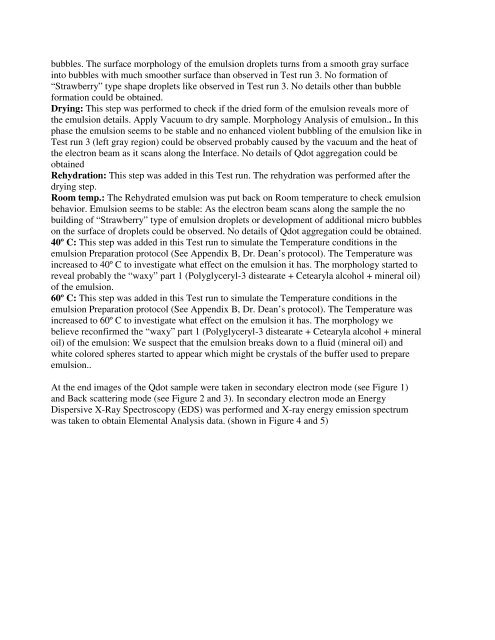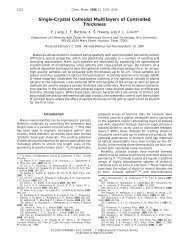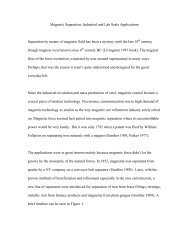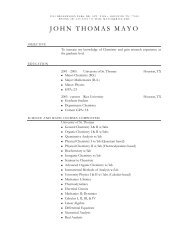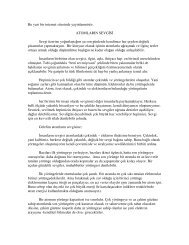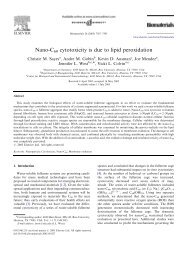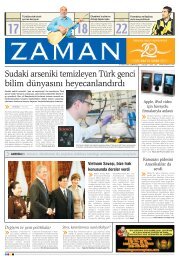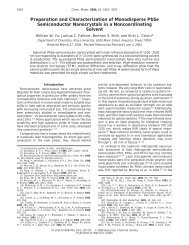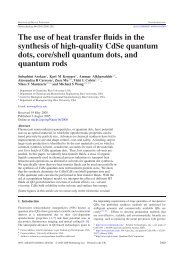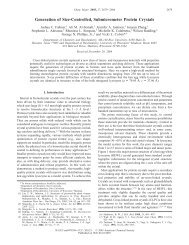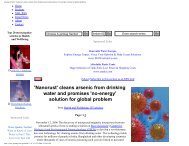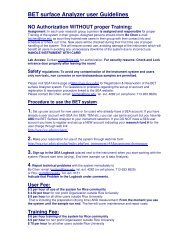Wet SEM Analysis of Quantum dot emulsions - Rice University
Wet SEM Analysis of Quantum dot emulsions - Rice University
Wet SEM Analysis of Quantum dot emulsions - Rice University
Create successful ePaper yourself
Turn your PDF publications into a flip-book with our unique Google optimized e-Paper software.
ubbles. The surface morphology <strong>of</strong> the emulsion droplets turns from a smooth gray surface<br />
into bubbles with much smoother surface than observed in Test run 3. No formation <strong>of</strong><br />
“Strawberry” type shape droplets like observed in Test run 3. No details other than bubble<br />
formation could be obtained.<br />
Drying: This step was performed to check if the dried form <strong>of</strong> the emulsion reveals more <strong>of</strong><br />
the emulsion details. Apply Vacuum to dry sample. Morphology <strong>Analysis</strong> <strong>of</strong> emulsion.. In this<br />
phase the emulsion seems to be stable and no enhanced violent bubbling <strong>of</strong> the emulsion like in<br />
Test run 3 (left gray region) could be observed probably caused by the vacuum and the heat <strong>of</strong><br />
the electron beam as it scans along the Interface. No details <strong>of</strong> Q<strong>dot</strong> aggregation could be<br />
obtained<br />
Rehydration: This step was added in this Test run. The rehydration was performed after the<br />
drying step.<br />
Room temp.: The Rehydrated emulsion was put back on Room temperature to check emulsion<br />
behavior. Emulsion seems to be stable: As the electron beam scans along the sample the no<br />
building <strong>of</strong> “Strawberry” type <strong>of</strong> emulsion droplets or development <strong>of</strong> additional micro bubbles<br />
on the surface <strong>of</strong> droplets could be observed. No details <strong>of</strong> Q<strong>dot</strong> aggregation could be obtained.<br />
40º C: This step was added in this Test run to simulate the Temperature conditions in the<br />
emulsion Preparation protocol (See Appendix B, Dr. Dean’s protocol). The Temperature was<br />
increased to 40º C to investigate what effect on the emulsion it has. The morphology started to<br />
reveal probably the “waxy” part 1 (Polyglyceryl-3 distearate + Cetearyla alcohol + mineral oil)<br />
<strong>of</strong> the emulsion.<br />
60º C: This step was added in this Test run to simulate the Temperature conditions in the<br />
emulsion Preparation protocol (See Appendix B, Dr. Dean’s protocol). The Temperature was<br />
increased to 60º C to investigate what effect on the emulsion it has. The morphology we<br />
believe reconfirmed the “waxy” part 1 (Polyglyceryl-3 distearate + Cetearyla alcohol + mineral<br />
oil) <strong>of</strong> the emulsion: We suspect that the emulsion breaks down to a fluid (mineral oil) and<br />
white colored spheres started to appear which might be crystals <strong>of</strong> the buffer used to prepare<br />
emulsion..<br />
At the end images <strong>of</strong> the Q<strong>dot</strong> sample were taken in secondary electron mode (see Figure 1)<br />
and Back scattering mode (see Figure 2 and 3). In secondary electron mode an Energy<br />
Dispersive X-Ray Spectroscopy (EDS) was performed and X-ray energy emission spectrum<br />
was taken to obtain Elemental <strong>Analysis</strong> data. (shown in Figure 4 and 5)


